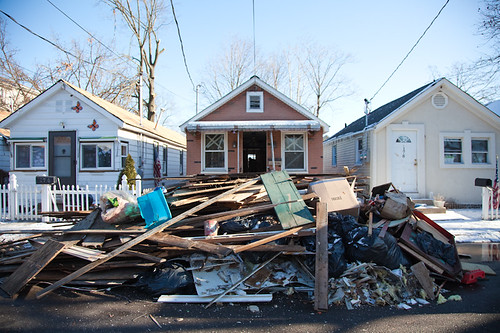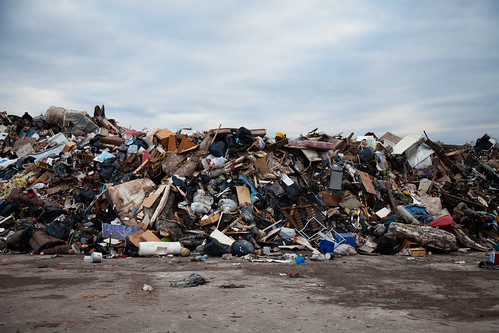 Disasters create a lot of debris. Invariably there will be questions about what to do with all of it, where it's going to go, who's going to pay for its hauling, and what happens if homeowners miss the deadline in getting it to the curb?
Disasters create a lot of debris. Invariably there will be questions about what to do with all of it, where it's going to go, who's going to pay for its hauling, and what happens if homeowners miss the deadline in getting it to the curb?To give you an idea, Superstorm Sandy created 8.5 Million cubic yards of debris, including 2.5 million cubic yards of sand and silt that was deposited onto roads limiting or halting transport. Debris and its management are central not only to individual homeowners cleaning up, but to the community as a whole and its return to a new normal.
While most of us will never know the joy of being saddled with the responsibility of having to deal with a mountain of household waste (literally), being able to help the process along in anyway possible will save you time and your community money.
The above graphic is what FEMA has put out for sorting debris at the curb, this is a the rule of thumb for sorting and is not always followed because when a basement looks like this after a flood:

It usually ends up on the street like this:

And taken to a pile where it all looks like this:

The resources required to coordinate the pickup, hauling, interim storage, sorting, and disposal of the aftermath of a disaster is a costly and time-intensive undertaking. As an impacted homeowner or Volunteer helping to clean up, please seek out guidance on where, how, and how long debris pickup will be taking place, and encourage everyone to abide by that request.
If you're unsure of where to find this information, call the 211/311 information referral service in your county (if available), search for your county's Debris Management Plan online, ask via your municipalities website, look at your county or state emergency management website, etc...Debris management
No comments :
Post a Comment